Plan your Mexico trip
I traveled the popular Mexico City to Yucatán backpacker route, which is part of the so-called Gringo Trail through Central America.
I also went on an incredible road trip through Mexico all the way from south-to-north, following the Pan-American Highway. Our contributors added some further tips for central Mexico to this guide.
While there are more must-see places in Mexico than can possibly fit in one trip, the following are all stops highly worth considering.
For more on how to travel between these places, see these travel routes and itineraries for Mexico.
Mexico Must-see places
Mexico City
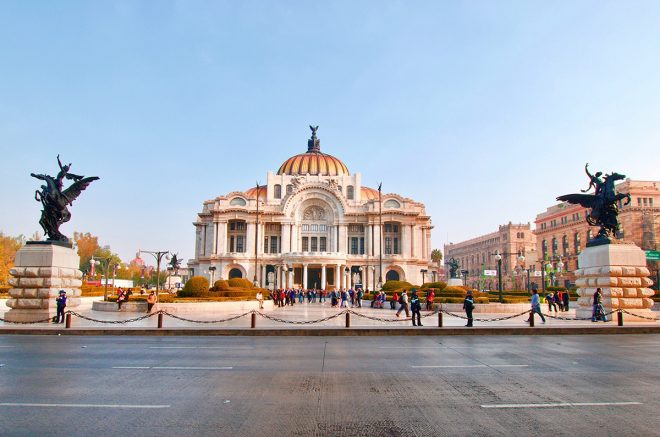
Many trips to Mexico start in the capital. But with 12 million inhabitants, Mexico City is a bit of a beast. You might find it a bit overwhelming at first… so take a deep breath. This is not a place you’ll want to rush.
Mexico City is brimming with history, breathtaking architecture, incredible art and museums, limitless entertainment, and some of the best street food that will ever hit your tastebuds.
Many travelers end up staying in the central area around Zócalo main plaza, and this is not a bad place to be based. But there are countless other neighborhoods, each with something different to discover. Be sure to check out my video below with essential travel tips for Mexico City!
There are some great day-trips and tours you can do from Mexico City, such as:
- Seeing the ancient pyramids of Teotihuacan
- Visiting the wonderful pueblo magico of Cholula
- Hiking the scenic mountain pass of Paso de Cortes
- Or visiting the historical town of Tepoztlán
Tepoztlán (Central Mexico)
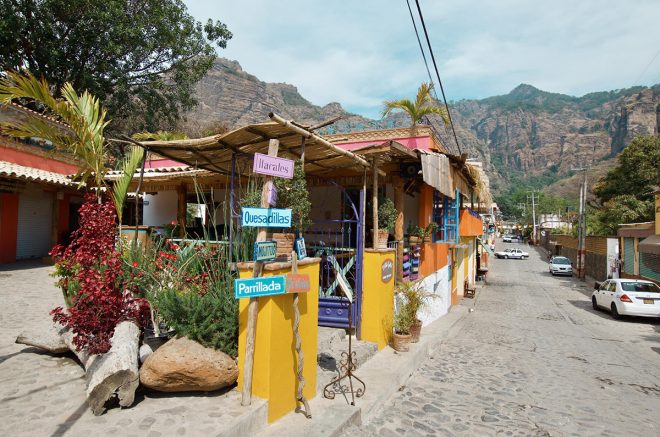
Tepoztlán makes for a convenient excursion from Mexico City, as it’s about an hour south from the capital. Tepoztlán is believed to be the birthplace of one of the most important Gods in Mesoamerica, Quetzalcoatl, or the plumed serpent. With dramatic scenery, distinctive archaeological history, and deep preservation of pre-Hispanic traditions, it’s a must-visit destination for inquiring minds.
The main attraction near this pueblo magico is the archaeological site of El Tepozteco, but the town is also is a good place to kick back and relax.
Pyramids of Teotihuacán (Central Mexico)
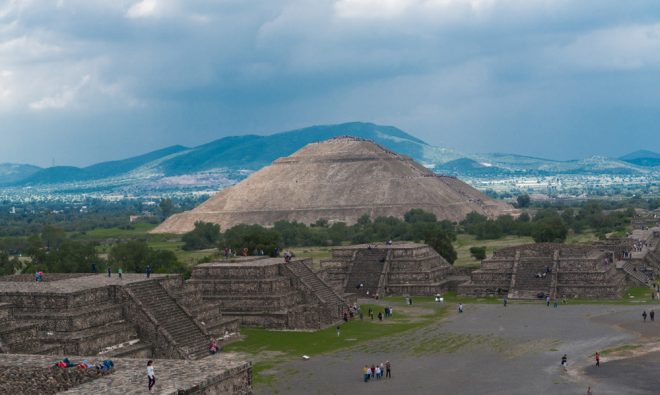
Within day-trip distance of Mexico City, you’ll find the ancient ruins of Teotihuacán, where you can see (and climb) the largest and most architecturally significant Mesoamerican pyramids. It’s a stunning place, especially outside of peak hours when the lack of crowds will enhance its mystique.
Teotihuacán was once the largest city in the Americas, with an estimated 125,000 inhabitants. There seems to be some uncertainty over the civilization that was based there — perhaps it was an entirely different one from the Mayas, Aztecs, or Olmecs, but some other sources suggest it may have actually been the capital of the Aztecs.
In any case, the site is amazingly well-preserved and should be considered a must-visit if you’re in the area. As is often the case at popular sites such as these, early morning visits will help you beat the crowds and catch the morning glow.
Guanajuato (Central Mexico)
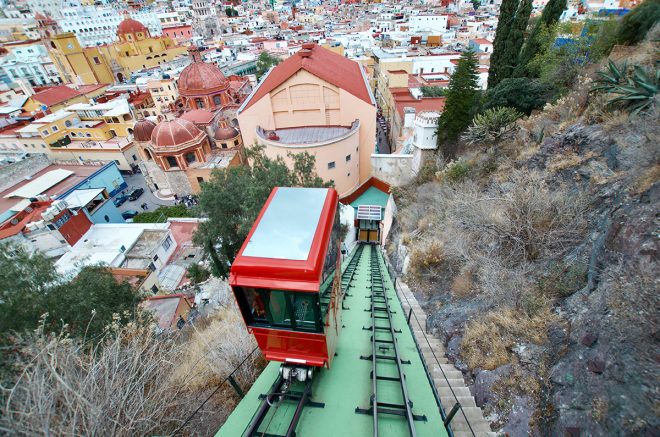
Guanajuato, the capital of the state which shares its name, once lured in the Spanish searching for silver ore. It eventually became the temporary capital of Mexico and was later named a UNESCO World Heritage Site.
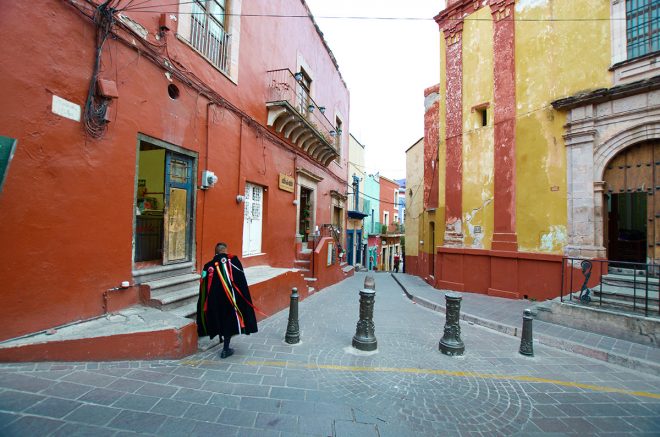
Some bloggers have taken to calling Guanajuato the prettiest city in Mexico. It’s definitely a colorful city filled with colonial architecture and tree-lined plazas. What also sets this city apart are its numerous mountain tunnels, initially built to divert water during storms, but now making for intriguing shortcuts all throughout the city.
Our Guanajuato travel guide tells you about the top things to do in Guanajuato.
Oaxaca City (Southern Mexico)
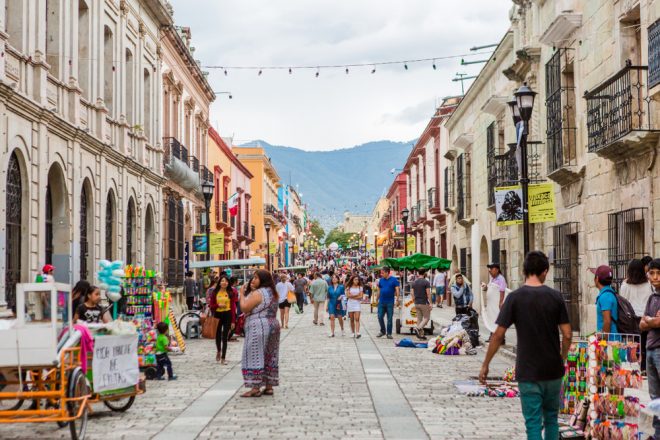
Oaxaca state is known as one of the most bio-diverse states, one of the food capitals of Mexico, as well as being home to many indigenous peoples including the Zapotecs and the Mixtecs.
The city of the same name received UNESCO World Heritage status and is one of the cultural tourism gems of Mexico. It also serves as a great base for exploring the landscapes of Oaxaca Valley as well as the ancient archaeological site of Monte Albán. There are numerous things to do in Oaxaca and it’s highly worth going on a walking tour of Oaxaca to fully appreciate the history of the city.
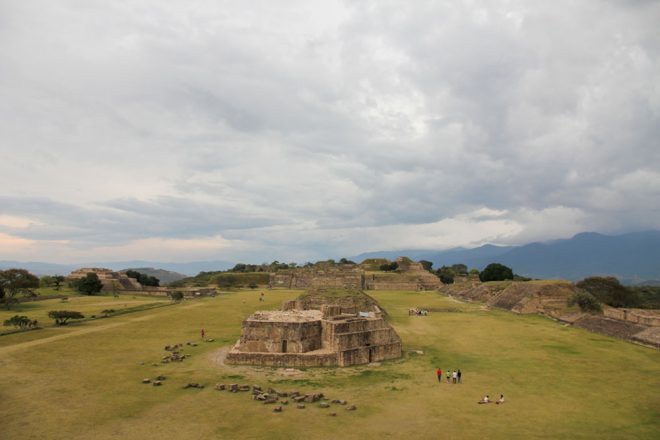
In Oaxaca, you just have to try the mole. You might know some moles already (guacamole, anyone?), but the legendary sauces from Oaxaca are probably nothing like you’ve tasted before. The traditional black sauce, mole negro, can contain dozens of different ingredients and takes hours to prepare. It’s usually served with chicken and rice, and it should be your first mole to try. But it doesn’t end there; Oaxaca is known as “Land of the Seven Moles”, so you’ll have your work cut out for you.
Oaxaca is also where the drink of mezcal originates. Like tequila, it’s made from agave plants, but through a more complex process. You’re not meant to take it with salt or lime (unless you want to look like a real gringo!), and you should always nip it instead of taking a shot.
Oaxaca has a lot of cultural festivals throughout the year. It’s also a fantastic place to experience the Dia de Los Muertos, the day during which people pay their respects to the dead. While people lay flowers at the cemetery, others celebrate life at a fun fair (which is right next door to the cemetery). A big parade takes place at night, with many people dressed as skeleton figures.
San Cristóbal de las Casas (Southern Mexico)
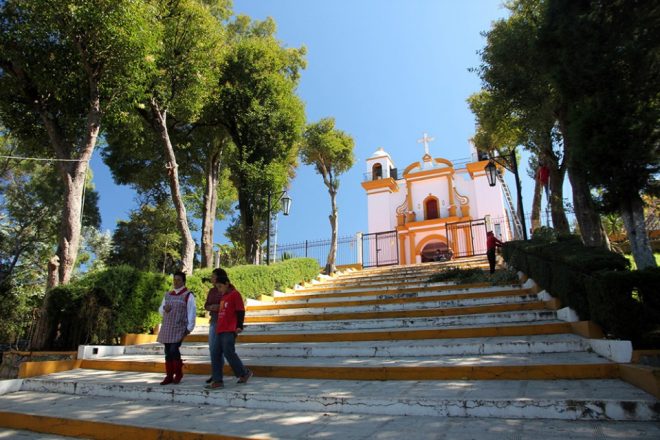
San Cristóbal de las Casas is a charming mountain town with lovely churches, markets and squares. It is also one of the cheapest places I have visited in Mexico, with hostel beds going for as little as $6 a night, and basic rooms costing as little as $12 a night.
The low prices in San Cristóbal are mainly due to Chiapas being among the poorest states. But it’s also incredibly pleasant, with a pedestrian-friendly old town and many churches with colorful bunting. Consider staying at Rossco Backpackers, where there’s a campfire every night where you can warm up from the colder mountain air and trade stories with other travellers.
San Cristóbal makes for a great base from which you can visit many waterfalls in the mountains, or visit nearby Mayan villages and observe some traditional cultures.
For example, go to the nearby indigenous village of San Juan Chamula. There you will find a church where Catholic and pagan rituals have mixed in unusual ways. While not for the squeamish, you may arrive to see a live chicken getting ritually sacrificed at an altar. Remember to be respectful to the villagers and avoid intrusive photography.
Sumidero Canyon

Also in Chiapas State is the Sumidero Canyon (or Cañón del Sumidero), a long river canyon with steep sides up to 1km high. You can enjoy a boat tour along the river, which can be booked easily from San Cristóbal de las Casas or online via GetYourGuide.
The valley and mountain ridges are filled with lush tropical and rainforest vegetation and there are waterfalls coming down from the canyon ridges. There’s a lot of wildlife as well; you’ll probably see kingfishers and other native birds and, if you’re lucky, some river crocodiles.
Don’t expect the river to be entirely pristine: there are issues with plastic trash, especially at a hydroelectric dam that also serves as the endpoint of the boat tours. But don’t let that put you off, as the burgeoning ecotourism in this area helps generate money for cleanup efforts and increased environmental protection. Sumidero Canyon is an epic place and well worth the price of a tour.
Mayan ruins of Palenque (Southern Mexico)
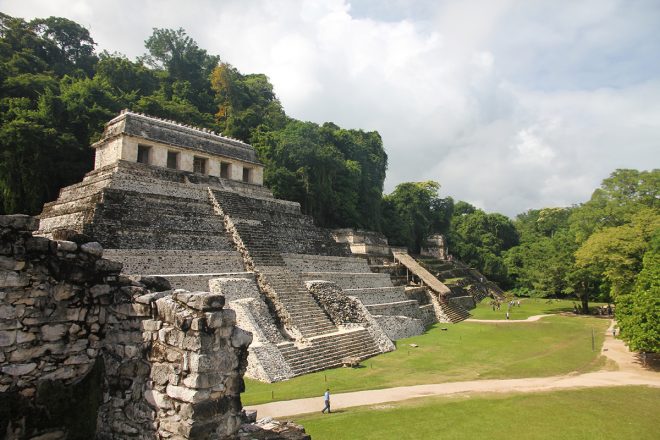
If you’re thinking of visiting some Mayan temples, you’ll probably think of Chichen Itza near Cancún, which is by far Mexico’s most famous Mayan archaeological site. But with two million annual visitors, entertainers walking around in Mayan costumes, and light shows in the evening, I feel this site may be a bit too commercialized.
Palenque in Chiapas State gets just half as many visitors as Chichen Itza, but the temples are equally spectacular. They’re also beautifully situated amid the jungle, rather than out in the open. Some of the ruins are partially overgrown, giving the site a slightly more organic feel — though it’s well on the tourist trail these days.
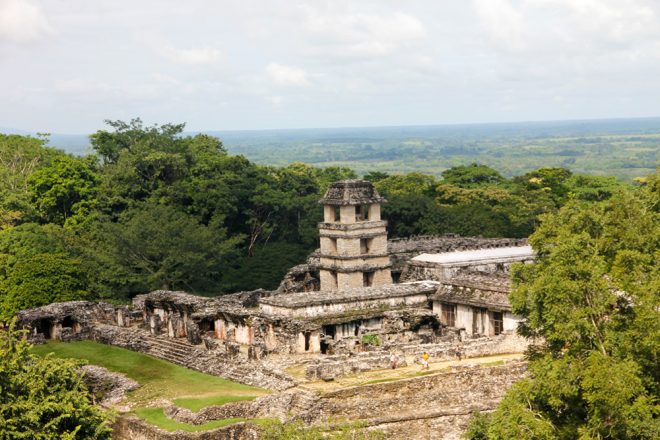
Another cool thing is that you can stay the night in one of the rustic guesthouses in El Panchan (near the park entrance) and wake up in the morning to the sound of howler monkeys. If you’re travelling between the Yucatán and Oaxaca, then Palenque makes for a perfect stop.
Yucatán Peninsula (Southeast Mexico)
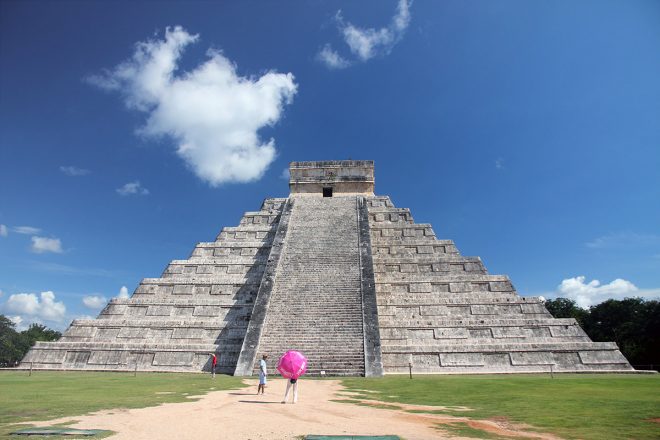
The whole of the Yucatán Peninsula is firmly established on the traveller map, famed as it is for its white-sand beaches, huge cave systems called cenotes, the epic ruins of Chichen Itzá, the mangroves and wetlands of the Sian Ka’an Biosphere Reserve, as well as the Great Mayan Reef.
The latter is the world’s second largest barrier reef (after the one in Australia) making it a true paradise for snorkelers and scuba divers, with the island of Cozumel being a favoured base for reef excursions. Big pelagic species often pass through the area, including bull sharks and whale sharks.

Isla Holbox is the main backpacker haunt these days, with its hammocks and rustic island vibes. The town of Tulum has gone more upscale in recent years, catering to a trendier and possibly more pretentious crowd. Away from the beaches, the cities of Mérida and Valladolid make for great bases from which to explore the cultural highlights of the Yucatán. The Yucatán can easily keep you busy for weeks if you want to see it all — be sure to check out our guide to the Yucatán to decide where to go.
Cenotes of the Yucatán

The Yucatán peninsula is home to countless underground sinkholes, caverns and caves that stretch for countless of miles. Once considered highly sacred to the Maya as portals to the underworld, many of these so-called cenotes have been made accessible for swimming or scuba diving.
The Cenotes Cuzamá near Mérida are semi-open and perfect for a swim, as is the Hacienda San Lorenzo Oxman near Valladolid — but there are dozens more all over the peninsula.
Scuba divers might want to take a look at Dos Ojos near Tulum, which has caverns you can dive through even with a basic Open Water certification. You will see beautiful sunbeams crossing past stalagmites from openings in the cavern roof. Angelita is another stunning cenote: it has a mystical layer of hydrogen sulfate that looks like a foggy cloud with various logs and branches passing through it—looking like a mysterious planet in a sci-fi movie.
The Pacific Coast (Western Mexico)
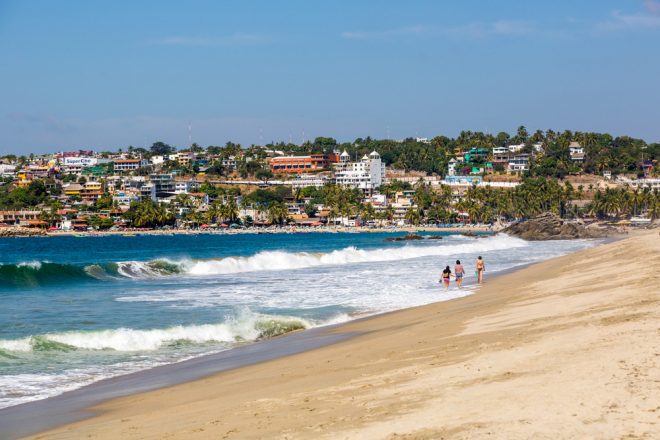
Mexico’s Pacific Coast is not always as immediately picturesque as the Caribbean, at least if you’re looking for that classic travel brochure look of white sand and palm trees. But there are tons of nice bays and charming beach towns that are well worth a stop.
Some of the seaside destinations include:
- Puerto Escondido, a favourite with backpackers in Oaxaca on the classic trail through Mexico.
- Puerto Vallarta, which is more of an upscale resort not far from Guadalajara.
- Mazatlán, a resort and expat town with many big hotels, but it also has a nice old town and at least one cool surfer hostel.
- Zihuatanejo, not at all on the backpacker trail, but it’s a small resort city with a local vibe and the occasional gringo. (Guerrero State has had security issues though, so check the current situation before going.)
Zihuatanejo is almost never mentioned in Mexico travel guides but I liked my stay there a lot. But maybe that was partly due to a rather unique attraction. Looming over the bay on one of its hills is what looks like a gaudy replica of the Greek Parthenon. This now-abandoned Greco-Roman luxury villa once belonged to one of Mexico’s most notorious crooked cops, who made millions through extortion and kickbacks. You can snoop around this abandoned villa if you give the guards a few pesos.
Copper Canyon (Northern Mexico)

The Copper Canyon (Barrancas del Cobre) in northern Mexico will blow you away with its scale, especially when standing along the vertigo-inducing cliffs. The canyon is so tall that at its bottom the climate can be almost tropical, while it’s an arid desert at the top. Surprisingly few tourists make it out there, but it’s easily one of my top things to see in Mexico.
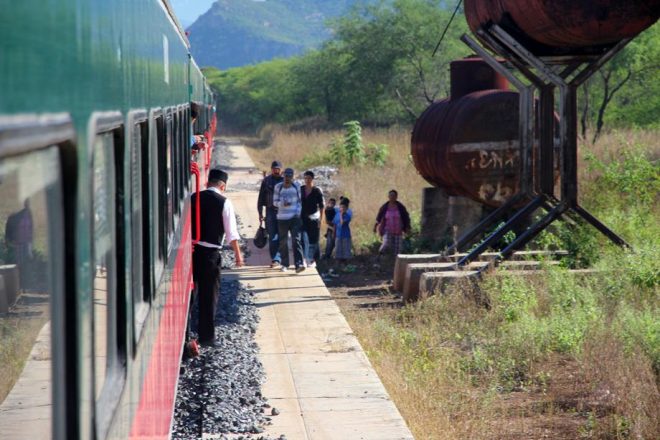
You can see the canyon from the comfort of the Chihuahua al Pacifico Railway line, which runs for 12 hours all the way across the region. This train ride is definitely one of my favorite experiences in Mexico. I have some incredible memories of just watching the incredible landscapes pass by from the window of my cabin while listening to the soundtrack of Red Dead Redemption (it just seemed appropriate at the time!).
The Copper Canyon is far removed from the popular tourist areas of Mexico, but if you can spare some days to add it to your trip, it’s absolutely worth it.
Creel (Northern Mexico)
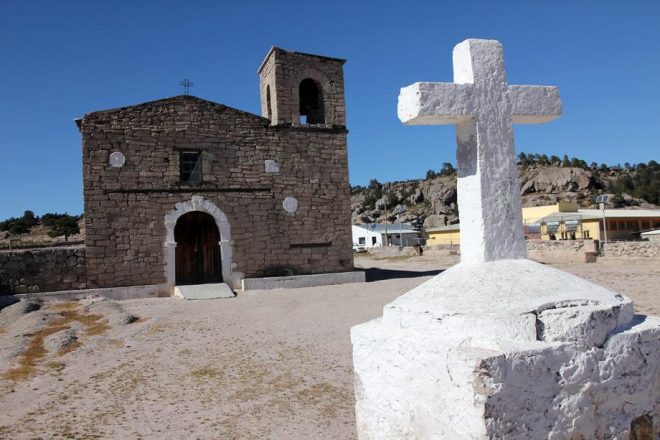
Creel is a small town in the Sierra Tarahumara in northern Mexico, near the Copper Canyon. It’s a lovely little base from which to take trips into the Copper Canyon, and explore the surrounding land by foot, horseback, or mountain bike. You can hire guides in the town of Creel, though nearby trails are signposted well and easy to do independently.
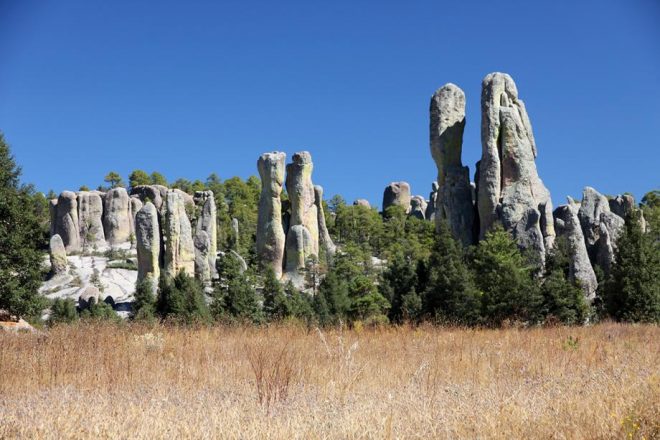
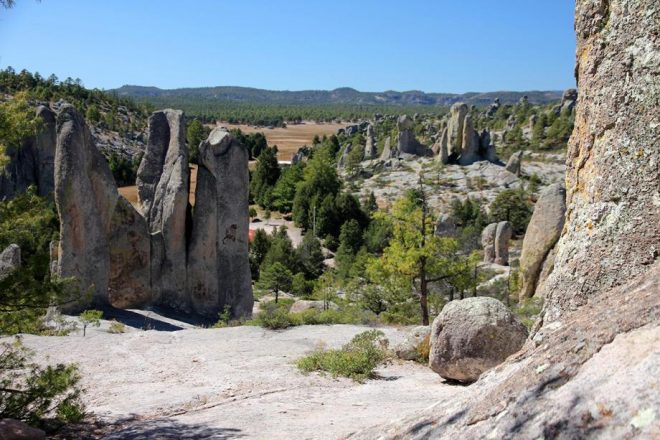
Around Creel, you’ll find many plains with cow ranches and valleys with beautiful rock formations created by centuries of wind erosion. The rugged scenery around the Sierra Tarahumara is also wild and beautiful; it was one of those places that conformed to my typical image of Mexico as a place filled with deserts, canyons, and other panoramic landscapes.
There are some epic waterfalls in the region; the Cascada de Cusárare is fairly close to Creel (about a 3o min drive), while the Cascada Basaseachi is much further (3 hours away), but it’s Mexico’s second-highest waterfall and well worth the effort to get there.
Looking for more Mexico travel inspiration? Check out these Mexico backpacking itineraries, this Yucatan travel guide, or this travel guide to Mexico City.
Some links may be affiliate links, meaning I may earn commission from products or services I recommend. For more, see site policies.
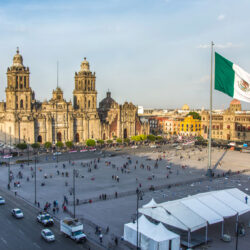
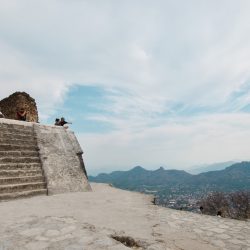
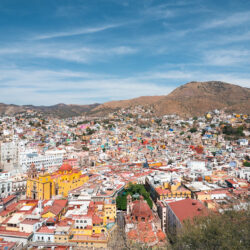

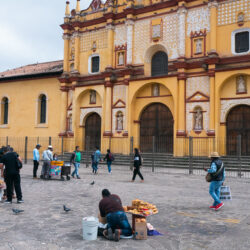






Nice blog information with well great photos. Thank you for sharing such a great narrative and beautiful photo.
This is such an informative article. Thanks for sharing 🙂
Making Mexico sound like the new 8th wonder 🙂 one question; what’s it like travelling in may/June (the hurricane season)?
Hey Mark, I guess I feel very positive about Mexico! Not sure though as I’ve traveled in Mexico only from Sept – Jan.
I’ve been to other countries like Guatemala during the rainy season and still had many fantastic travel days there. You just have to be a bit flexible with your plans as some days are better for staying inside and reading a book
I love Mexico and have traveled to most of the places you mentioned here. You are correct that only certain parts of Mexico are dangerous and for the most part it is a safe country to travel to.
However, you are recommending Zihuatanejo which is in Guerrero… That is one of the most dangerous states of Mexico. Go anywhere outside of those states in the middle Pacific coast.
The Guererro stats are so high because of Acapulco city. But your point is well taken and anyone should assess the situation. (I’ll add a note.)
Hi Marek,
Firstly, thanks so much for all of this information!
My partner and I are travelling Mexico for about 3 weeks in June. We have 3 and a half months total travelling all through central america and finishing by sailing from panama to colombia!
I was wondering if you could give me some good ideas or itinerary for our Mexico part of our adventure as it is our first stop so we kind of need to have it planned. Especially because we are making a little side stop in Havana and will be flying there and back from Cancun, so we need to have those tickets booked before we get there in order for visas! Which makes timing in each place fairly crucial!
My rough idea was land in Mexico City (4 days) Oaxaca (3 days) San Cristo (2 days) Palenque (2 days) Palenque to Campeche (1 day) and Campeche to Playa Del Carmen (3 days) and in that area we could see chitchen iza and cancun etc, before flying to Havana for a few nights and then returning to Cancun.. From there I was thinking to go down to Coast and spend about 4 days in Tulum before entering into Belize and on we go!
Sorry if that is confusing, I hope it makes sense! I would love to see what you think or have any ideas at all on that!? Researching this part of the trip is making me crazy!
Thanks !
Hey Samuel. That sounds like a neat plan actually. It’s certainly nice to start with plenty of time in Mexico City / Oaxaca. Your route seems cool – I did something roughly similar on my second trip through Mexico (which also included a trip to Cuba).
Really interesting and rounded post. Mexico is definitely on my list.
Fantastic! Thanks for the reply Marek 🙂 Do you have any other advice for the rest of our trip or any itinerary we should look at?
Thanks again
Hi,
I loved this guide, it was the first I read and helped me get over all the negative news about mexico. I kept coming back to your great advice throughout my visit of this amazing country, so a huge thank you for inspiration!
Also, I love your maps, they are beautiful. I am trying to make my own for an album, do you mind spilling the secret on how you made them?
Hi Katja. Thanks for the kind words and I’m so glad it eased your nerves! I created the maps myself using vector image editing software. Sadly I haven’t found any easy ways to make this type of map.
Great article, and I like your website!
I live near Los Angeles and I love to drive down into Mexico frequently, on long roadtrips. So far I’ve made it as far as Puebla and Acapulco, but next trip I’m going to go at least as far down as Guatemala (which I visited already in 2012, but I flew there).
I discovered an excellent and fascinating part of Mexico on a previous trip that nobody (other than Mexicans) seems to know about! It’s called Huasteca. Stunning waterfalls and beautiful turquoise pools, fascinating towns up in the hills, a great kind of food I’d never had before. Even the local music was good. I was in the area for several days before I spotted another gringo. The feel of the landscape is more Southeast Asia than North America. And almost ZERO TOURISTS. There was one cool little mountain town I stopped in, surrounded by clouds and karst cliffs, I thought I was in Laos or Guilin. I can’t wait to go back.
Hadn’t heard of this yet but your description has me hugely intrigued! (Love the comparisons with Laos and Guilin… beautiful places). Very cool, I’ll need to follow your advice when I’m in Mexico next time 🙂
Yes, I hope you do! I think you’d enjoy that area.
Just as a sample, do a Google image search for Xilitla. A funky little town built on top of a mountain, with bright pastel-colored buildings (there’s a seven-story hotel in the center of town that’s bright pink and yellow), and a surreal park-like area nearby built by some crazy English guy several decades ago.
Also, not too far from the Huasteca area is the amazing town of Real de Catorce. You have to drive through a mile-long single-lane tunnel through a mountain to get there, and once you come out of the tunnel, it’s like you’ve gone back to the 1600s. The town is incredible!
Again, great site, I have it bookmarked.
Was pleased to find this info! Very detailed and confirmed some of my thoughts. I am planning to go from Belize through Mexico, wanting to visit Merida, Mexico city, and Jalisco, with friends to visit and stay with at those locations, getting there safely and effectively in whats on my mind. So currently trying to figure out my route and plans. Thanks for posting your insight!
If your ever in Belize, CA Check out the SOUL Project in San Ignacio..Its an Art Bar, super relaxed and welcoming. A great place for back packers, and travelers since there is a Hostel upstairs.
Hi- I am looking for an official guide that can accompany us through chichen itza, palenque, coba. We’ve been in the area several times before and are looking for detailed explanations. The person should have a degree in archaeology or be quite knowledgeable in the area. It is for myself and my husband only. Any suggestions?
Hola Marek,
Thanks for the great info.
I’m a senior who like independant travel and will go to Mexico in September. Do you think I can do The Gringo trail, Mexico City and then then the route to Oaxaca and San Cristibol etc. in a two month or so time frame with out being rushed.
Yes I think 2 months is great for that route, you’ll be able to hit up all the key places without rushing…
Thanks for the info, my boyfriend and I are just booking flights for a 3 week trip in May and want to do Cancun to Mexico City route. Do you think this route is possible in 3 weeks and with a £1,000 budget. We’re both pretty used to budget hotel rooms and street food 🙂
Thanks
Sara
Yeah that should be do-able 🙂
Hi Marek, thanks for the advice I’m going to mexico south coast next month! I was wondering what are the costs of hiring mopeds/scooters around mexico? And are there plenty of places to rent from?
I saw plenty of places to rent from in Tulum, Playa del Carmen, etc. Can’t remember in other places but doubt it’s difficult to find. Not sure about prices though!
Great information Marek!
I was searching the web but couldn’t find the answer for the following: I read i would need a return ticket in order to get a visitors permit if i enter mexico by plane but i would like to travel further by land. Do you know if it would be a problem to enter mexico by plane but leave it by boat (from Chetumal to Belize)?
And which sights do you recommend when i travel form Cancun to Chetumal?
Hey Rosanne, this is no problem. I did exactly this myself. Tulum and the Costa Maya are interesting stops along the way, and there are also various cenotes (cave systems) inland between cancun and chetumal that are cool locations for a swim, dive, or snorkel.
Hey there Marek!
Really great articles, I love your blog!
Just one quick question; how much time you’d recommend for the Northern Route? Do you think 3 weeks is enough time?
Many thanks in advance and best regards,
Rebecca
Hey Rebecca. Yeah you can do it in 2 weeks (or less if you reduce the number of stops), so 3 weeks should give you plenty of time.
Hi ~ I’m planning a trip the coming weeks and I was wondering, how does the bus situation work? Like is there a bus from to and from each city you mentioned above (Oaxaca, San Christobal de las Casas, Puerto Escondido, Palenque, Merida and Tulum)? Is there any way of seeing the bus schedules before I go?
Yes, you can count on there being multiple bus companies serving all these routes. I’m not sure if there’s a unified website with timetables – I usually looked this info up locally! The bus stations often have a central hallway with loads of little ticket booths of different bus companies, and signs with the destinations and departure times.
Hi! I’m planning a 3 month trip to Mexico, Guatemala, Nicaragua and Costa Rica at the end of this month, and wonder whether you’d advise getting the Rabies jab!? Thanks in advance!
Hey Jess. I’m-not-a-doctor-but: the probability of getting it is very low, the vaccination is relatively expensive, and it doesn’t give full protection anyway. There’s generally no need for it unless you’re going to be handling animals (as a vet or biologist) or maybe if you’re going to spend all your time in remote jungles or in bat caves.
Great article ! So many incredible places. But you could also add San Miguel de Allende and Guanajuato. Amazing towns– beautiful and really peaceful.
Great article! So many incredible places. But you could also add San Miguel de Allende and Guanajuato. Amazing towns–beautiful and really peaceful.
Is January a good time to travel to Mazatlan?
Jan has mild weather and not much rain. As good a time as any!
Hi!
What is the best month to travel to Mexico?
I was planning to visit during October.
I’ve been to Mexico in October and while I had some rain (it’s the tail end of the rainy season), most days were sunny.
Marek, this blog post has been so useful in planning our initial travels around the Yucatan! We took a lot of your advice on here and your place summaries really do a great job of reflecting the vibe of each of the places. We weren’t fond of Cancun or Playa del Carmen, but we got into Tulum’s more laid-back vibe.
I do have to disagree with you on Chichen Itza though! We thought Chichen Itza was really impressive, absolutely incredible ruins. That said though, we went really early and were the first ones there when the ruins opened for the day. It made a real difference because it’s cooler in the morning and we basically had the place to ourselves. When we left at 11am, it was scorching hot and absolutely manic. There were floods of tourists at the entrance, thousands of stall holders waving things at you, balloons etc. We avoided all that and only saw it on exit, but I guess your experience must’ve hit the peak of all of that hullabaloo!
Hey Charlie. Yeah, I went there around mid-day which has surely colored my experiences! Good to know it’s different in the morning–many who read this will probably want to know that too, so thanks for sharing 🙂
Hey Marek! Your Page is cool and very Useful,Too! I am planning on Doing a backpackingtrip in Mexiko this Summer. Do you think ist is realistic to Cover up the Yucatan and Oxaca Route plus the northern Route in 4 weeks or is that Too tight? And what do you think Would that cost?
Thanks in advance!
Yes I think you can do that in 4 weeks. If you stay in hostels, eat local food, take buses, etc. you might spend around €1000 (*very* rough estimate)
Great information! How would I’ve loved to contribute to this piece of work 🙂
As an anthropologist who writes about Mexico on Ahoritaya.com I am sure there would be some useful information.
Hi Marek,
Do you think it would be worth while to rent a car, considering that the prices are very cheap as little as $7/day and even lower. Also, how are the road conditions as compared to Canada or the United States? Or, would it just make much more sense to take the bus from place to place. Just to give you an idea, I plan on travelling the Yucatan with a couple of my friends going from Cancun to Merida to Campeche to Tulum and back to Cancun. Any info would be great!
Thanks!
I suppose there are pros and cons to both. 🙂 Rent a car and you can depart for your next destination whenever, so you have more freedom and never waste any time. Going by bus can give you less hassle and can be less tiring. If you’re going with friends then maybe sharing a car is more fun.
The roads in Mexico range from excellent (often these are toll roads) to kind of bad (country roads with lots of poorly marked speed bumps and occasional potholes). Nothing too challenging though so long as you pay attention. In countries like Honduras I often felt like I was off-roading it whereas in Mexico the roads are at least reasonably well maintained.
BTW be sure to check if that $7/day includes insurance or if there are other gotchas. They’ve gotten me with that kind of stuff before 🙂
Thanks a bunch! Also, some people have been telling me that rental cars are often targeted by criminals and gangs because of noticeable rental car license plates. Is this at all true?
Thanks!
Hmm, could be. I’m not sure if I have good info on that!
Thanks for answering the majority of the questions I had in a simple no BS way. Mucho Grasias
Hi,
Firstly thanks for a great post! Really helpful & made me even more excited.
I’m a student planning my first trip on my own, for a month in August this year,
I was wondering, if you had any idea how much money i’d need for this trip (happy to skimp on hostels to save money to do more things!)
And also, what would you say were the best airports to fly in and then out of? I was thinking maybe in to guatemala and then back from cancun?
Any help would be absolutely brilliant !!
Thanks
It’s hard to give cost estimates as everyone travels in a different style, but I’d say count on roughly 1000 USD a month staying in hostels / eating locally / etc. That said Guatemala is quite a bit cheaper than Mexico.
If you can find a flight to Guatemala City, that could work really well. It’s not as well connected as Cancun though.
Thank so much for the quick reply!! That was what I was kind of thinking so that’s great 🙂
Thanks so much for this great summary of Mexico for backpackers. It’s on my list and I would definitely like to check out Tulum.
I plan on going to Mexico City this summer. Are there any cool hiking spots, or lakes, etc that you recommend?
Hi Mark, great post! very helpful. Please could you provide the link to Omnibus as several websites are coming up and we are not sure which one is the legitimate one.
We are also hoping for advice on the following: We will have 2 weeks in Mexico. we will arrive in Mexico city and plan to explore there for about 4-5 days. We then want to go to see the Copper Canyon and are thinking of getting a flight or bus to Chihuahua and jump on the el chepe train from there. We hope to spend about 2 days in the Copper Canyon with some time in Creel. We then want to go to Cancun airport, and from there explore the Riveria and hit the beaches in the last week. Our problem is the travel in between the regions (Mexico City – Chihuaha – Copper Canyon – Cancun). Do you think this itinerary is realistic for 2 weeks. Also, from the Copper Canyon, can we catch a flight to Cancun (thereby saving us the trip of geoing back to Chihuahua). We really want to keep travel in between places to the minimum :S thanks so much!
There are some direct flights between Chihuahua and Cancun, so you could look into that. It’ll be a tight schedule, but possible if you fly…
Hello Marek, my name is Eva and I’m a photographer, I was born in Mexico City but raised in NYC, I haven’t been in Mexico Since I was a child, I saw your post and I thought it was very interesting, anyways resently I lost one of the main reasons why I wanted to go back to Mexico, and I made a promise to that person, We was gonna go backpacking around Mexico, meaning stop at every state, now I know that might seem impossible and a bit crazy but just out of curiosity how much you think I’ll probably spend and how long do you think it will take me to make that trip??
It’s hard to say without more specific details, but it sounds like a very ambitious idea. With 31 states, even assuming you only spend 3 days in each state (which would already be a super crazy exhausting schedule) that’s 93 days already. I would probably let go of the arbitrary goals (like X miles travelled or X states seen) and focus on the experiences you want to have. Some states are much more interesting to a visitor than others after all.
as mexican living in Chiapas I have to say that it’s a great post! I just wanna point out that Tequila is near Guadalajara not Mexico City.
Cheers!
Good point, thanks!
Hey, Mexico is not central America. Mexico is part of North America. On the other hand, love your review
This is true. I actually never say that it is, though I guess the many times that I mention Central America makes it seem that way. From a travel perspective Mexico is often grouped with the Central American countries as they are so frequently combined in a trip.
I never say Mexico is in Central America. 🙂
Hi Marek,
What transportation would you recommend me to go from Mexico City to Guadalajara and so on further to the North? I found a bus service online but it is too expensive (825 persos per trip)…
That sounds perhaps a little high. Just did a quick search on the Omnibus company website where that trip is 571 pesos. Your best bet for a low price might be to just go to the bus station and compare prices… there are loads of bus companies in Mexico and not all of them have a good presence online. Not sure what to suggest other than buses though – maybe someone else has suggestions…
Sometimes you could find flights cheaper than taking the bus, specially between mayor cities like Mexico and Guadalajara. Look at the Vivaaerobus and Volaris websites. Just beware of the hidden fees.
Hola Marek,
My wife and I are attending a wedding in Puerto Vallarta for a week and would like to spend a week either side travelling around. We will be flying from Brisbane Australia in and out LAX. We are active people and interested in culture and local food; could you recommend an intinerary for us? And suggested modes of transport?
If you like culture and food I’d probably head for Oaxaca as it’s one of the hotspots for cultural tourism. It might be a bit far away from your starting point though. Puebla near Mexico City is something to look into. The city of Guadalajara is also very nice (and underrated) and not far from Puerto Vallarta. Intercity buses in Mexico are generally comfortable and punctual, and can serve as your main mode of transportation.
Nice post, here you can find more useful information about Playa del Carmen, México –> http://www.vivaplaya.net 😉
Hi fellow travelers, if you are close to Mexico City you must add Tepoztlan to your list; It’s a beautiful town well known for an Aztec pyramid on the peak of a mountain, exotic ice-cream flavors made by townspeople and the birthplace of Quetzalcoatl the Aztec god. This town is consider as a “Pueblo Magico” a well hidden gem. This rustic town seems like got trapped back in time with their vintage, well preserved, streets, houses and cathedrals. The traditional food served in “el mercado” (food market) is amazing, not to mentions that its pretty cheap and clean. Some of the activities offer by this place are horse riding, zip lines, camping, rock climbing, a vast amount of hiking trails, biking, and one my favorites an underground volcanic trail connected to the Popocatepelt (volcano). During raining season which is during summer, you can appreciate countless waterfalls during your hike to the pyramid.
You will fall in love with this place, the connection between nature and yourself is indescribable.
The bus fare from Taxqueña ( Mexico City south central bus station) is roughly 110 pesos ($9). It takes about 1 hour and 10 minutes to get there, all by highway.
Most of this activities are free. My advise would be to talk to the local people and they will tour you around town, people are really polite and willing to help others.
I was born and raise in this town, I now reside in Florida but if you have any questions let me know. I usually go twice a year and if it happens that I’m there around that time I show you around. I also host travelers for free in my town’s house when I am there.
Thank you.
Hey Noe, I am planning to visit Mexico beginning late June. Will you be around Mexico City then?
Hi Noe,
Thank you for your comment. Your town sounds like a great place to visit. I am in Mexico for work and have a lot of time off. Can we connect?
I would like to have definite, detailes suggestions about the best places to go in Mexico for a biking holiday in March, close to touristic sites for interesting and cultural activities and easy lodging, but close to roads safe enough to ride loops of about 100 km a day, with challenging topography at times (not all flat), some hills, some valleys, nice scenary, etc. Where is the best place for that?
Could you give me suggestions or links to answer that question.
Are there hotels or groups specialized in leading or guiding cyclists?
Not my specialty I’m afraid! Might want to try hitting up the Mexico forums on Lonely Planet – there’s bound to be someone with an answer.
there are some people going from Guadalajara to Puerto Vallarta by bike, stoping in San Sebastian del Oeste .
try to google some of those words maybe something comes up .
Ahhh this was detailed and awesome, exactly what I was looking for. Thanks for all the helpful info! Your description of the Copper Canyon has me reconsidering my travel route now…
Hey, thanks for the mention! Nice guide….oh, how I miss Mexico (and it’s only been a few months since I left!)
Mexico is amazing isn’t it? I miss it too. 🙂
Hi Marek, great website!
I am hoping to spend about a month or so in and around Mexico. I was thinking of flying into Guatemala and flying out of Mexico city so I don’t really know how much I can fit in in that timeline. I’d love to see Belize as well but don’t think it is realistic given my time.
Guanajuato was recommended to me as well which is a little north so out of my way. I’m just wondering what you think would be the best route. And how long will I have given the distance I will have to travel?
Cheers
Thanks Tommy. 1 month gives you a good amount of time and it makes sense to fly/in out of different airports. Guatemala is many a traveller’s favorite in Central America so you’re wise to include it! Here are my 2 cts:
In Guatemala:
– Stay in Antigua (I’d suggest 2 days)
– San Pedro on Lake Atitlan (I’d suggest 4 days, it’s chilled out place, very beautiful)
– Go north to Semuc Champey See: https://www.indietraveller.co/semuc-champey-guatemala/
– See the ruins of Tikal (stay in Flores)
These are basically the highlights of Guatemala in 1,5 weeks, maybe 2 if you take it a bit slower. Then you have two attractive options:
1) Head north into Belize and stay there for a few days (many backpackers go to Caye Caulker and then take a boat to Mexico). Belize is fun as it’s got a very different Carribean vibe, though it’s an expensive country. Moving on, you can stay mainly in the Yucatan region of Mexico, which is good mainly for tropical beaches, partying, etc. and exploring the cenotes. You could fly out of Cancun.
2) Or head west out of Guatemala into Mexico’s Chiapas region. There’s Palenque ruins (if you are not ruined-out by Tikal 🙂 and more cultural/food/hiking related things of interested in Chiapas and Oaxaca regions, which conveniently lead to Mexico City. San Cristobal is a cool place to go on this route as well (see my stuff above about the church in the indigenous village nearby) Puerto Escondido is a popular (low rise / non-resort type) beach place on the pacific side there.
The best route probably depends on whether you want more beach/island time or more cultural experience in Mexico.
To be honest, Monterrey, N.L. is such a beautiful place to visit, is in the north of Mexico, but not really in the border with USA, that’s like 3 hours driving, is a really big city with tons of amazing places to visit!
Watch this video, i live here and this city is amazing!
https://www.youtube.com/watch?v=LIE6vUuPij0
That’s a great tip, thanks for sharing!
I have just booked a 3 week trip to Mexico starting and ending in Cancun. I want to go to Palenque and just wondered if 3 weeks would give me enough time to get up to the Copper Canyon and back?
It could take you a very long time from Cancun if travelling by bus. I started in Mexico City and it took me 4-5 days to work my way up to the north via Guadalajara, Mazatlan, etc. I then took a flight back down. It might be worth investigating if there’s a cheap return flight up north.
2 weeks are enough to visit yucatan? What route would u suggest me? Its my first solo trip
2 weeks should be fine!
For beaches I’d suggest Tulum or the islands near Cancun/Playa Del Carmen. Caves and cenotes are interesting to see. Despite it being so famous I wasn’t a big fan of the Chichen Itza ruins and I would suggest going to Palenque instead. An added plus is that you’ll see some jungles which is a different environment from the coast. You could consider going down a bit further to San Cristobal – this is in Chiapas and not Yucatan but could add some variety to your trip as well (it’s in the mountains with a different climate). Playa del Carmen and Cancun are hyper touristy love-it-or-hate-it places.
Good luck and have fun on your first solo trip!
hola Marek
thank you for the great article!
can you give us any more info re: estimated costs and availability of cheap beach huts in Tulum and Palenque…?
everything online looks expensive!
is it possible to rent cabanas without reservations?
or is everything booked months in advance?
can we just show up?
traveling with my wife and 4 year old daughter
gracias!
Hola! Yeah Tulum on the beach itself is not super cheap. What myself and other budget travellers would do is stay in Tulum town, then rent bicycles and cycle 20 min to the beach. But that’s not as awesome as waking up in the morning at the beach itself.
There’s rustic jungle huts in a small place called El Panchan near Palenque, and many hostels/guesthouses in Palenque town itself. If you’re outside of high season (they say high season is Dec till Easter) you could probably try just showing up. As I recall many of the El Panchan places didn’t take online reservations when I tried, though many in Palenque do.